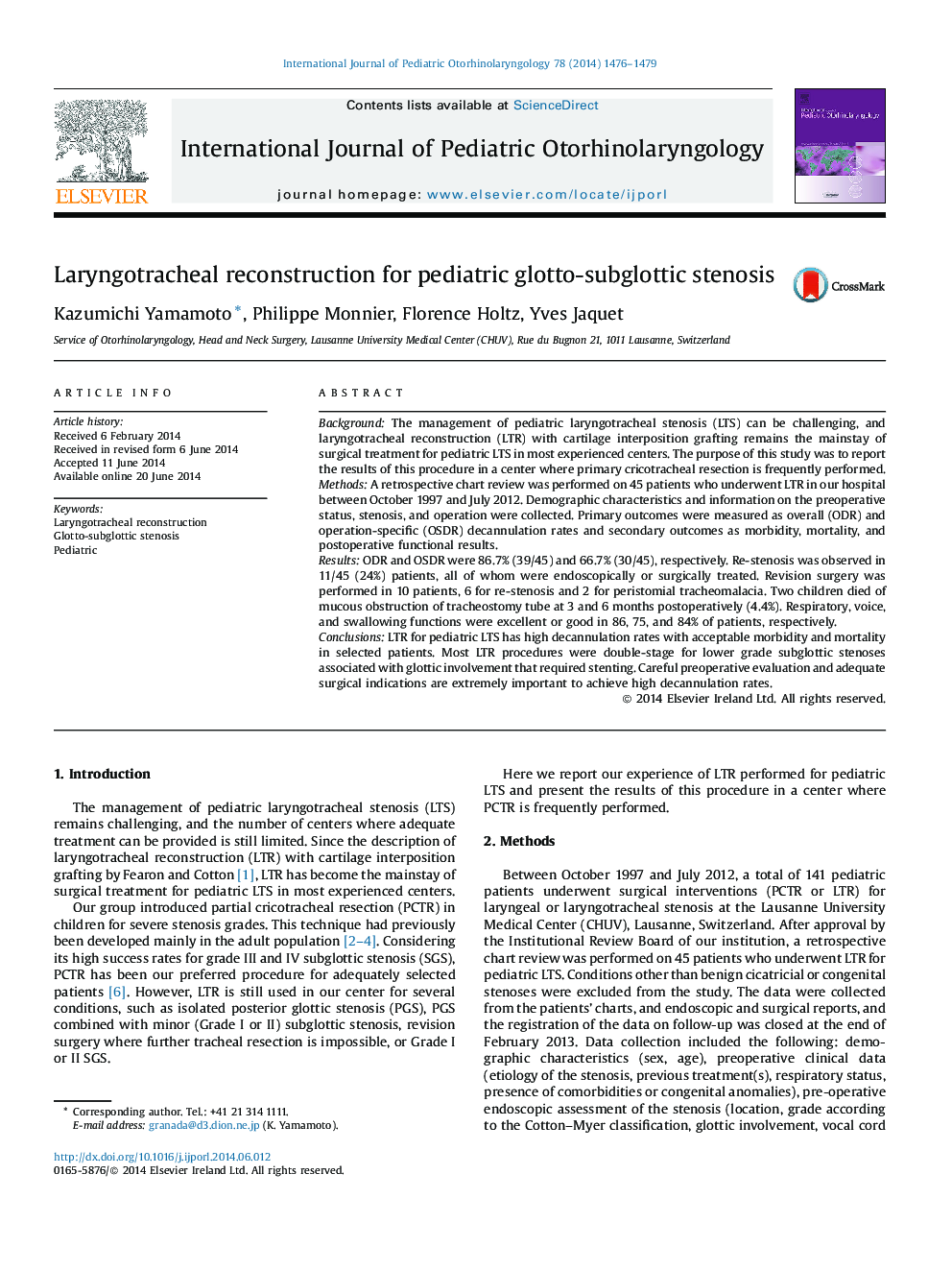| Article ID | Journal | Published Year | Pages | File Type |
|---|---|---|---|---|
| 4112814 | International Journal of Pediatric Otorhinolaryngology | 2014 | 4 Pages |
BackgroundThe management of pediatric laryngotracheal stenosis (LTS) can be challenging, and laryngotracheal reconstruction (LTR) with cartilage interposition grafting remains the mainstay of surgical treatment for pediatric LTS in most experienced centers. The purpose of this study was to report the results of this procedure in a center where primary cricotracheal resection is frequently performed.MethodsA retrospective chart review was performed on 45 patients who underwent LTR in our hospital between October 1997 and July 2012. Demographic characteristics and information on the preoperative status, stenosis, and operation were collected. Primary outcomes were measured as overall (ODR) and operation-specific (OSDR) decannulation rates and secondary outcomes as morbidity, mortality, and postoperative functional results.ResultsODR and OSDR were 86.7% (39/45) and 66.7% (30/45), respectively. Re-stenosis was observed in 11/45 (24%) patients, all of whom were endoscopically or surgically treated. Revision surgery was performed in 10 patients, 6 for re-stenosis and 2 for peristomial tracheomalacia. Two children died of mucous obstruction of tracheostomy tube at 3 and 6 months postoperatively (4.4%). Respiratory, voice, and swallowing functions were excellent or good in 86, 75, and 84% of patients, respectively.ConclusionsLTR for pediatric LTS has high decannulation rates with acceptable morbidity and mortality in selected patients. Most LTR procedures were double-stage for lower grade subglottic stenoses associated with glottic involvement that required stenting. Careful preoperative evaluation and adequate surgical indications are extremely important to achieve high decannulation rates.
